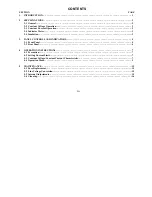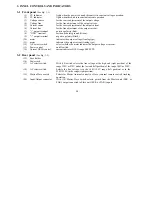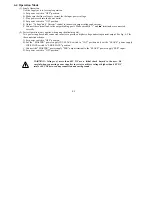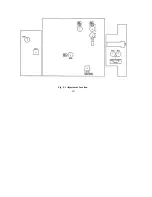
E7
4. OPERATION INSTRUCTIONS
4-1 Precaution
(1)
AC input
AC input should be within the range of line voltage
±
10% 50/60Hz.
WARNING. To avoid electrical shock, the power cord protective grounding conductor must be connected
to ground.
(2)
Installation
Avoid using the power supply in a place where the ambient temperature exceeds 40ºC. The heat sink located at the rear
of the power supply must have sufficient air space for radiation.
CAUTION. To avoid damaging the power supply, do not use it in a place where ambient temperature exceeds 40ºC.
(3)
Output voltage overshoot
Voltage between output terminals never exceeds the preset value when the power is turned on or off.
4-2 Setting Current Limit
(1)
Determine the maximum safe current for the device to be powered.
(2)
Temporarily short the (+) and (-) terminals of the power supply together with a test lead.
(3)
Rotate the COARSE VOLTAGE control away from zero sufficiently for the CC indicator to light.
(4)
Adjust the CURRENT control for the desired current limit. Read the current value on the Ammeter.
(5)
The current limit (overload protection) has now been preset. Do not change the CURRENT control setting after this
step.
(6)
Remove the short between the (+) and (-) terminals and hook up for constant voltage operation.
4-3 Constant Voltage / Constant Current Characteristic
The working characteristic of this series Power Supplies is called a constant voltage/constant current automatic crossover
type. This permits continuous transition from constant current to constant voltage modes in response to the load change.
The intersection of constant voltage and constant current modes is called the crossover point. Fig. 4-1 shows the
relationship between this crossover point and the load.
For example, if the load is such that the power supply is operating in the constant voltage mode, a regulated output voltage
is provided. The output voltage remains constant as the load increases, up until the point where the preset current limit is
reached. At that point, the output current becomes constant and the output voltage drop is proportional to further increases
in load. The crossover point is indicated by the front panel LED indicators. The crossover point is reached when the CV







































